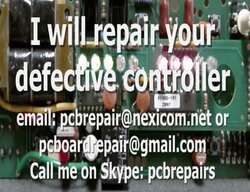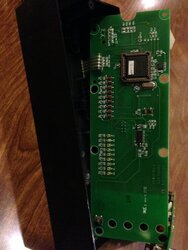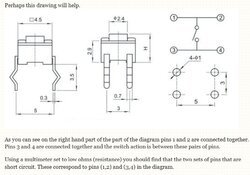Stovensen
Minister of Fire
I've tried reaching that guy David in Ontario, He doesn't respond to my e-mails so I'm not sure he's still doing these board repairs, any insight would be appreciated.
David has several e-mailaddresses and he's also on Skype as you can see here. He could be very busy, though.
But give these options another try:

if you look close at this picture there's 4 holes on the right, they seem to be a female insert so possibly made for a calibration sensor of some sort,
These 4 holes are test ports for the voltages specified by the text next to them. A very handy feature, when troubleshooting. My Quest Plus also has them, but the finetrim is a more "old fashioned" trimpot version.
With a voltmeter or an oscilloscope you can monitor, if the voltages fed to the blowers and auger motor are correct. CAUTION: These voltages can be lethal, so do take care. If you don't have enough experience with this, please let someone more experienced help you.
As I understand your issue, you have an unstable pellet feed, right? Now, this could be either due to wrong auger timing or an unstable output voltage from the Triac on the control board, so let us focus on the auger voltage... on this video I'm monitoring the auger voltage on my Quest Plus by connecting a scope to the test ports marked: Common and Auger. A healthy voltage should be perfectly symmetrical and at full line voltage and this is clearly the case here. Note: I'm using a 10:1 divider probe to protect the scope input. It can max. handle 80 Volts peak-peak. The line voltage is 230 V, 50 Hz here.
Also, we can monitor the timing and by watching the time counter on Youtube, it is easy to see that the timing is up to specs on my stove.
Lucas, with a voltmeter you should be able to make the same test of your auger voltage. ( except testing for symmetrical waveform, this requires a scope ).
Monitoring the auger voltage on my Whitfield Quest Plus:
I tried to do It like It was explained in my last post but It's not doing the fan change sound like described after the light goes on when i hit the calibration button I pressed cal again and nothing, I understand that this person doesn't have the same stove as I but I thought I would at least try,
As for the calibration procedure, I'm sure this is somewhat similar to setting the time and date on a digital clock. You know, by pressing a couple of buttons in a certain sequence, so with some trials I bet you'll soon get to know how the thing is "ticking". Remember to monitor the voltages through the test ports while altering the settings. This way you'll see any changes immediately.
The service manual will most likely have some exact information on the calibration procedure, but I only have the owners manual. The service manual can be purchased here: http://woodheatstoves.com/whitfield-profile-2030-service-manual-p-2159.html
Good luck and take care. Keep us posted
Bo
Last edited:



